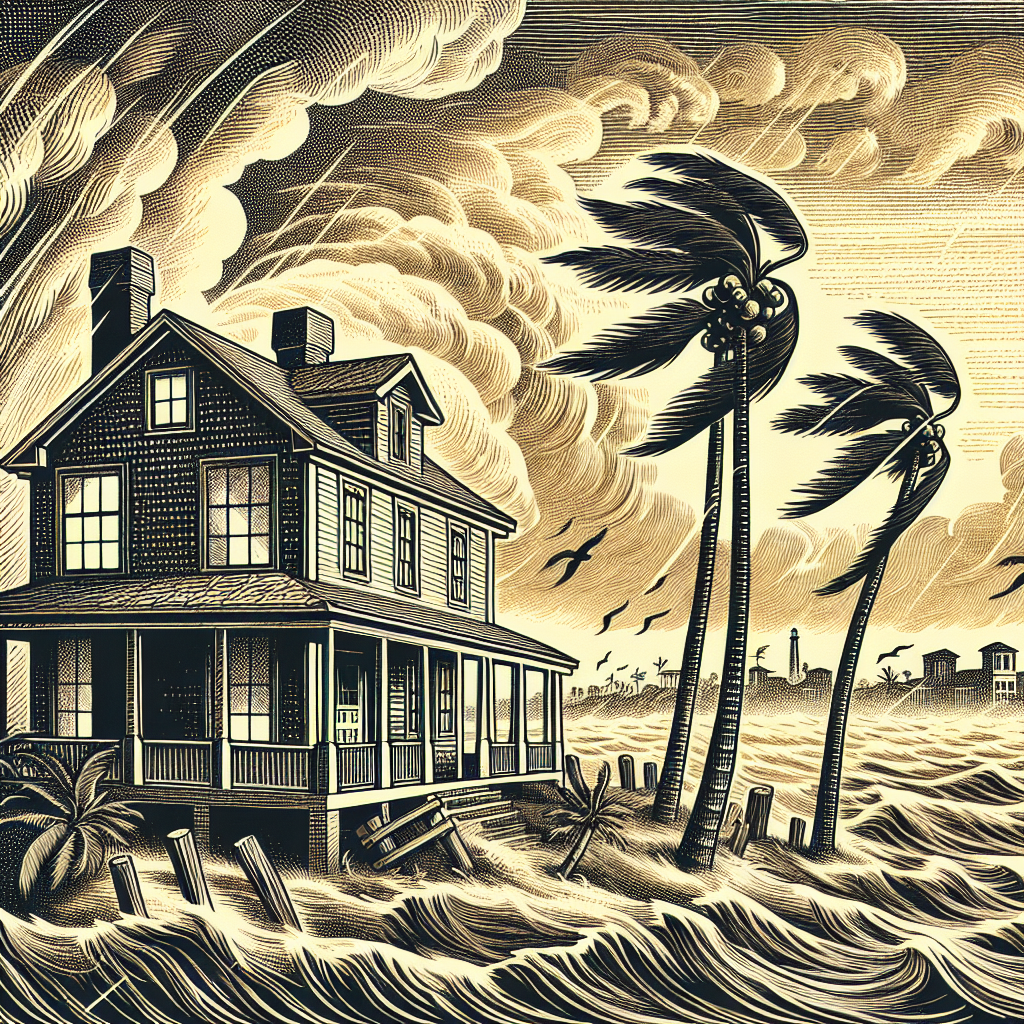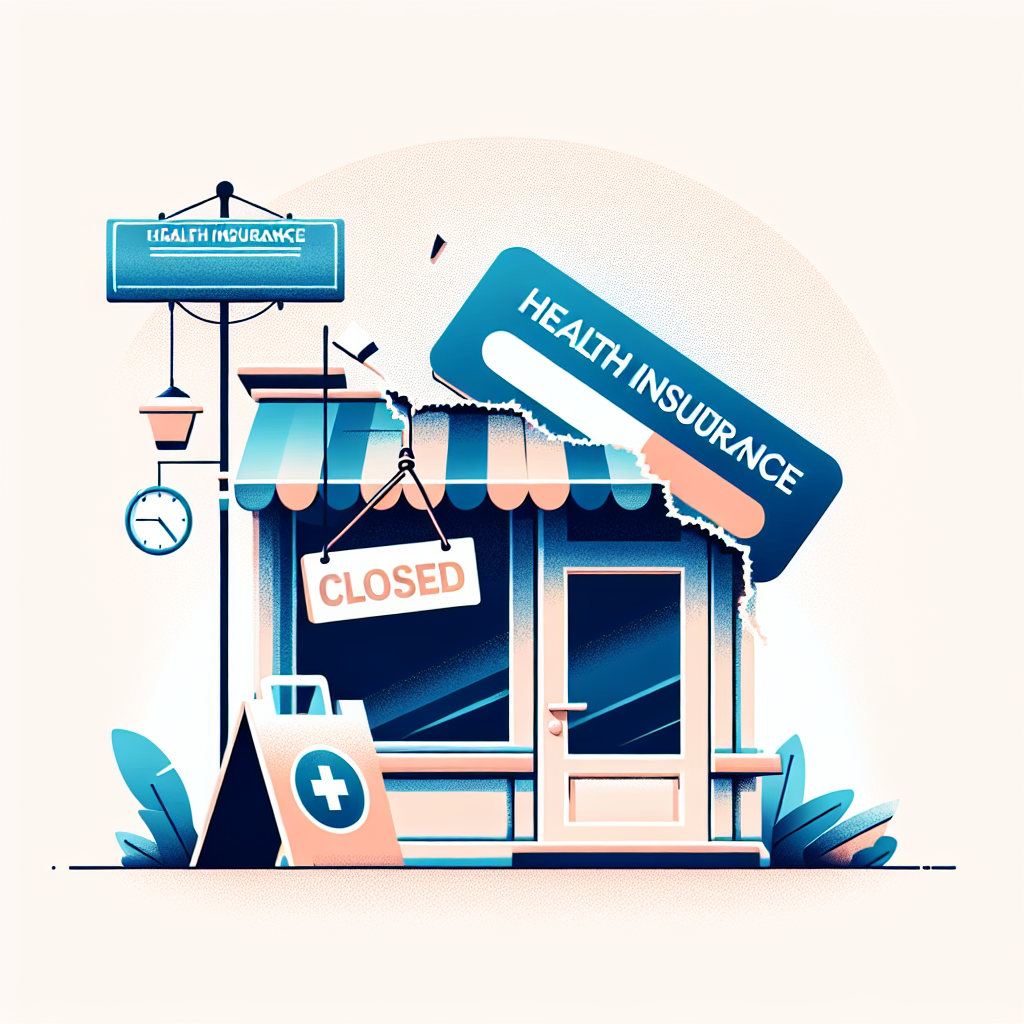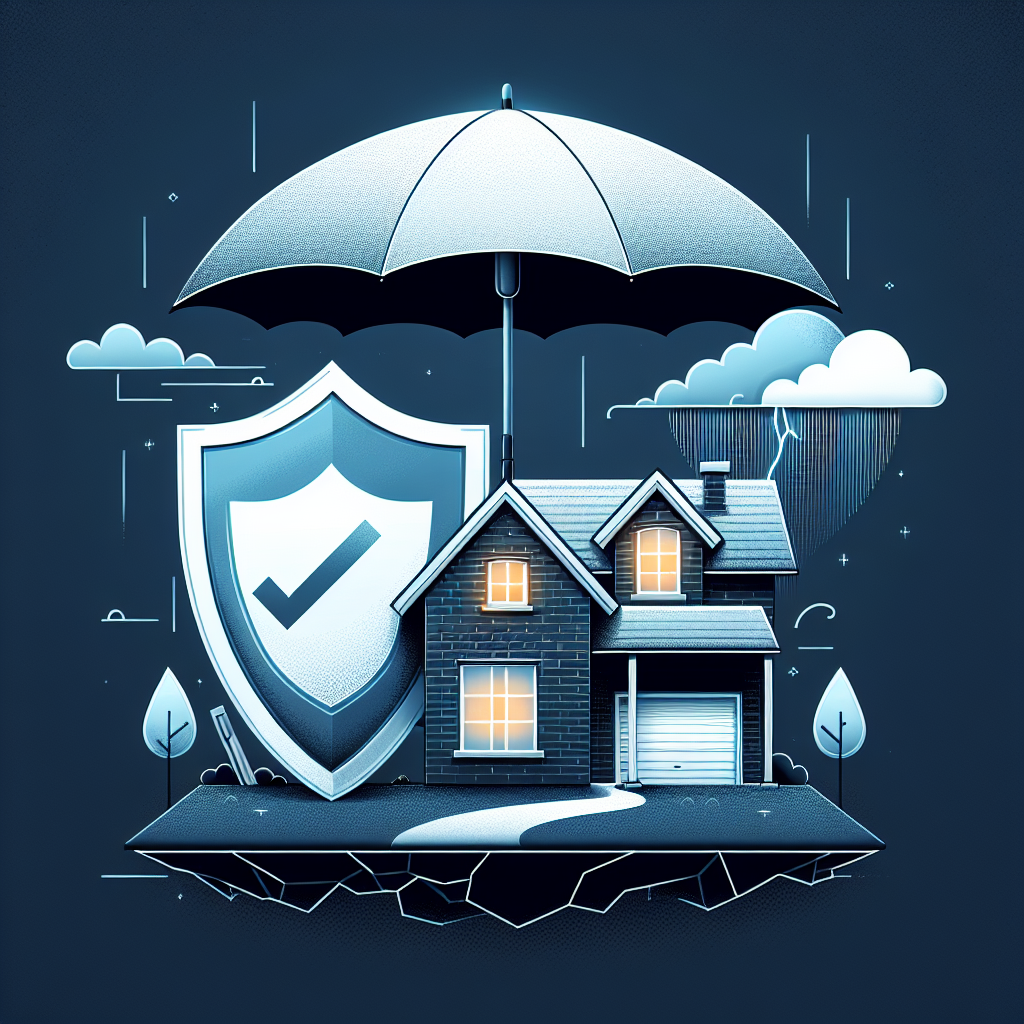Filed under Home Insurance on
Good Home Insurance Coverage: What You Really Need

Why Home Insurance Matters More Than Ever
Between rising repair costs, stronger storms, and pricier building materials, homeowners face a wider range of financial risks than they did a decade ago. That’s why Good Home Insurance Coverage is more than a line item in your budget—it’s a safety net that keeps a bad day from turning into a financial crisis. This guide breaks down what to carry, how to tailor limits, and the latest trends influencing premiums, so you can buy confidently and avoid costly surprises at claim time.
What Good Home Insurance Coverage Really Means
The phrase sounds simple, but it carries specific implications. Good Home Insurance Coverage protects your dwelling and your finances from the most likely threats while aligning with how you live and what you own. It balances three priorities:
1) Fully rebuilding your home if it’s destroyed. 2) Replacing your belongings without painful out-of-pocket gaps. 3) Shielding your savings from lawsuits and medical bills if someone gets hurt on your property or you accidentally injure others.
To deliver on those goals, a strong policy addresses both severity (catastrophic losses) and frequency (the events that happen most often, like wind and water damage). It also anticipates exclusions and fills them with targeted endorsements where needed.
Know Your Policy’s Core Building Blocks
Dwelling (Coverage A)
This is the big one—the cost to rebuild your house at today’s prices, using comparable materials and craftsmanship. Ask your insurer to run a replacement cost estimator that accounts for square footage, custom features, foundation type, roof material, and local labor rates. If you’ve remodeled a kitchen, finished a basement, or added a deck, update your file so the estimator reflects reality.
Consider extended or guaranteed replacement cost. Many carriers offer an extra 25% to 50% above your stated dwelling limit to absorb inflation and demand surges after widespread disasters. In areas prone to wildfires, hurricanes, or hail, that buffer can mean the difference between a funded rebuild and a painful shortfall.
Other Structures (Coverage B)
Fences, detached garages, sheds, and gazebos usually fall under this section, typically set at a percentage of Coverage A. If you’ve built a large workshop or outbuilding, you may need to increase this limit beyond the default.
Personal Property (Coverage C)
Your furniture, electronics, clothing, rugs, and kitchenware live here. Many policies default to 50% or 70% of Coverage A, but that’s only a starting point. Opt for replacement cost coverage so you’re paid what it costs to buy new items today, not the depreciated amount. High-value items like jewelry, watches, art, collectibles, and camera gear often have sublimits—schedule them individually to get full protection and broadened perils.
Loss of Use (Additional Living Expense)
If a covered claim makes your home uninhabitable, this pays for temporary housing, extra commuting costs, and meals. In tight rental markets, standard limits can run out fast. Look for higher caps or time-based coverage (such as 12–24 months) to ensure you can stay put while repairs unfold.
Personal Liability
This protects your assets if you’re legally responsible for injuries or property damage. Medical costs and legal judgments are expensive, so many experts recommend at least $300,000 to $500,000. If you have significant assets or future earnings to protect, consider a $1 million umbrella policy that sits above your home and auto liability limits for extra peace of mind.
Medical Payments to Others
No-fault medical coverage for minor injuries on your property. It’s not a substitute for liability limits, but it can resolve small incidents quickly and amicably.
How Much Is Enough?
Right-sizing limits is the heart of Good Home Insurance Coverage. Here’s a practical process that avoids guesswork:
Start with a rebuilding estimate, not your home’s market price. Land value, school districts, and mortgage rates don’t affect what it costs to reconstruct your house. Use your insurer’s estimator and compare results with a local contractor’s opinion if you’ve done custom work.
Choose replacement cost for both the dwelling and personal property. Actual cash value (ACV) deducts depreciation, which can slash your payout—especially on older roofs and electronics.
Add an inflation guard. Construction costs rarely stand still. Inflation guard provisions automatically raise your limits at renewal to keep pace with materials and labor.
Boost ordinance or law coverage. Building codes evolve. If you must upgrade wiring, add fire sprinklers, or reframe walls to meet current code after a loss, this endorsement pays the difference. Many homeowners carry 10% to 20% of Coverage A, but older homes or historic districts may need more.
Understand Perils, Exclusions, and Surprise Gaps
Home policies often cover named perils or open perils with specific exclusions. The biggest blind spots are predictable:
Flood is typically excluded. You’ll need separate flood insurance, whether through the National Flood Insurance Program or a private insurer. FEMA flood maps are a starting point, but heavy rain and drainage issues can cause damaging surface water even outside high-risk zones.
Earthquake requires a separate policy or endorsement. In seismic regions, consider the deductible structure and masonry vulnerabilities. Brace water heaters and secure tall furniture regardless—loss prevention can lower premiums and stress.
Sewer or sump backup is commonly excluded without an endorsement. If you have a basement, finished lower level, or older plumbing, add this. A few hundred dollars in premium can save tens of thousands in cleanup.
Service line coverage is a newer, valuable add-on. It covers underground pipes and wiring between your home and the street that most homeowners mistakenly think the city maintains.
Roof surfaces may be subject to depreciation or a schedule based on age and material. If possible, negotiate replacement cost for your roof or understand how your carrier applies wear and tear to wind and hail claims.
Liability: Protect Your Current and Future Net Worth
Personal liability is where big financial disasters hide. Dog bites, pool accidents, fallen trees, or a guest slipping on ice can escalate quickly. While frequency is low, the severity can be enormous. Consider your risk profile—do you host gatherings, have a pool or trampoline, or own a dog? Some carriers restrict certain breeds or require specific safety measures like fencing or self-latching gates.
Umbrella insurance is cost-effective, often a few hundred dollars per year for $1 million in extra protection. This coverage can also extend to certain personal injury claims like libel or slander, depending on the policy. To qualify, carriers typically require higher underlying home and auto liability limits.
Deductibles and Smart Ways to Reduce Premiums
Choose the highest deductible you can comfortably cover from your emergency fund. Higher deductibles reduce premiums and discourage small claims that can raise rates later. In storm-prone regions, you may see separate deductibles for wind or a percentage-based named storm deductible. Understand which events trigger which deductible before you buy.
Beyond deductibles, here are pragmatic ways to control costs without weakening protection:
Bundle home and auto. Multi-policy discounts can be substantial and sometimes come with broader coverage terms.
Upgrade your roof and mitigation features. Impact-resistant roofing, hurricane straps, or wildfire-resistant vents can trigger meaningful credits. The Insurance Institute for Business & Home Safety promotes FORTIFIED standards that many insurers reward.
Install water leak sensors and automatic shutoff valves. Non-weather water damage is a leading cause of claims; smart devices reduce both frequency and severity, and some carriers provide discounts or even subsidize the devices.
Modernize the big four: roof, electrical, plumbing, and HVAC. Insurers factor system age and condition into pricing; updates lower risk and premiums.
Mind your claims history. Filing small claims can cost more than they’re worth over time. Use your policy for emergencies, not maintenance.
How Insurers Price Risk
Premiums reflect expected losses plus expenses and profit. Carriers evaluate hundreds of variables, including construction type, roof material and age, your distance to a fire hydrant, local fire protection class, prior claims (via industry databases), and even credit-based insurance scores where allowed by law. In many states, weather trends—especially severe convective storms—are the biggest driver of rate movement.
Insurers also scrutinize the condition of your home. Peeling paint, missing shingles, or old plumbing can spur inspections or coverage limitations. Proactive maintenance pays off both in resilience and insurability.
Industry Trends You Should Watch
Research from the Insurance Information Institute and reinsurance firms like Swiss Re and Munich Re consistently shows elevated catastrophe losses, with severe convective storms—hail, straight-line winds, and tornado clusters—driving a large share of insured losses in the United States. NOAA tallies a rising number of billion-dollar weather events, and rebuilding costs remain sticky due to labor shortages and supply chain constraints. The result: higher premiums and stricter underwriting.
Carriers are also adopting more granular pricing. Roof-specific endorsements, actual cash value settlements for older roofs, and separate wind or hail deductibles are increasingly common. Telematics-style concepts are arriving in home insurance via smart sensors, with some insurers offering premium credits for leak detection or monitored security systems. If you want Good Home Insurance Coverage in this environment, lean into mitigation, know your roof terms, and budget for adequate limits.
Common Endorsements Worth Considering
Sewer and sump backup: Essential for homes with basements or older lines. Verify if there’s a cap per occurrence and whether coverage includes your finished materials.
Service line: Covers costly breaks in underground utilities you own—water, sewer, electrical, data lines—often excluded otherwise.
Equipment breakdown: Extends coverage to sudden mechanical or electrical breakdowns of major systems like HVAC or appliances.
Home office or business property: Standard policies have low limits and narrow protection for business gear and liability. If you run a business from home, address both property and liability exposures explicitly.
Scheduled personal property: For jewelry, fine art, collectibles, musical instruments, or high-end bikes. Scheduling often removes deductibles and broadens perils, including mysterious disappearance.
Ordinance or law: Boost this if your home is older or in a strict code jurisdiction. It pays the cost to rebuild to current standards, not just to the prior condition.
Claim Time: What to Do Before and After a Loss
The best claim experience starts before anything goes wrong. Build a home inventory using your phone—walk through rooms and closets, narrating what you own and approximate values. Store videos and receipts in the cloud. Photograph serial numbers for electronics and appliances.
After a loss, prioritize safety and mitigation. Shut off water for leaks, board up openings after storms, and keep receipts for temporary repairs. Notify your insurer promptly, and ask whether the claim will count against your record before filing if damage is minor. For larger claims, maintain a log of conversations, save emails, and request all coverage determinations in writing. If there’s a dispute over scope or pricing, consider a public adjuster or an appraisal process where your policy allows.
Regional Considerations
Wildfire zones: Defensible space, ember-resistant vents, Class A roofing, and clearing debris from gutters are crucial. Some carriers require mitigation proof before binding coverage. Look for extended replacement cost and coverage for additional living expenses that last through long rebuild timelines.
Hurricane and coastal areas: Understand named storm or hurricane deductibles and any exclusions for wind-driven rain. Inspect your window protection—storm shutters or impact glass can lower rates. Consider flood coverage even if you’re outside a high-risk zone; storm surge is not covered by standard policies.
Hail and tornado alleys: Ask how your carrier settles roof claims. If they use ACV for aged roofs, explore carriers offering replacement cost or plan for higher out-of-pocket costs. Impact-resistant shingles may qualify for meaningful discounts.
Cold climates: Non-weather water damage and freeze losses spike in winter. Smart leak detectors, pipe insulation, and auto-shutoff valves reduce risk and may qualify for credits.
In each case, choosing Good Home Insurance Coverage means aligning endorsements and limits with your region’s top perils, not just the lowest premium.
Shopping Like a Pro
Gather consistent details for quotes: year built, square footage, roof age and material, updates to plumbing/electrical/HVAC, foundation type, proximity to hydrants, and any protective devices. Ask carriers to use the same reconstruction cost assumptions, so you’re comparing apples to apples.
When reviewing quotes, dig into these line items:
Replacement cost versus actual cash value on both dwelling and roof.
Water damage definitions and exclusions, including repeated seepage or mold caps.
Separate deductibles for wind, hail, or named storms, plus their trigger definitions.
Sublimits for valuables and whether scheduled property is worldwide and all-risk.
Ordinance or law limit and inflation guard percentage.
Loss of use coverage structure—dollar cap or time limit—and whether temporary housing availability in your area matches the coverage.
For truly Good Home Insurance Coverage, prioritize clarity over price. A slightly higher premium with stronger terms often costs less in the long run.
Myths That Cost Homeowners Money
Myth: My market value equals my dwelling limit. Reality: You insure the cost to rebuild, not the price you could sell for.
Myth: Flood is covered by homeowners insurance. Reality: It almost never is. Consider separate flood protection, even in moderate-risk zones.
Myth: My home policy covers my side business. Reality: Most do not, or they cap business property at very low amounts. Add dedicated coverage.
Myth: Claims always make premiums skyrocket. Reality: Severity, frequency, and loss type matter. Avoid small claims and focus on prevention to keep your record clean.
Myth: A new roof solves everything. Reality: It helps, but carriers still care about materials, installation quality, and local hail or wind exposure. You still need the right terms to maintain Good Home Insurance Coverage.
Expert Tips From the Field
Ask for a copy of the replacement cost estimate and review the inputs. If your home has custom millwork, premium windows, or specialty masonry, make sure those details are reflected.
Document your roof. Keep photos after installation and each spring, noting condition and any minor repairs. This timeline helps during hail or wind disputes.
Revisit limits annually and after renovations. Rising construction costs can outpace standard inflation guards, especially after region-wide disasters.
Consider a pre-claim consult for borderline events. Many insurers will discuss hypothetical outcomes, helping you decide whether to file.
If your area faces insurer withdrawals or tightened underwriting, invest in mitigation that carriers value most for your peril—brush clearing, impact glass, or Class 4 shingles can make the difference between an approval and a non-renewal.
A Quick Coverage Checklist
Dwelling: Set to full replacement cost with extended or guaranteed replacement cost endorsement.
Roof: Replacement cost settlement if available; understand any age or material schedules.
Personal property: Replacement cost with adequate limits; schedule high-value items.
Liability: $300,000 to $500,000 minimum; consider a $1 million umbrella.
Loss of use: Sufficient to rent locally for 12–24 months if needed.
Water: Add sewer/sump backup and consider leak detection credits.
Code upgrades: Ordinance or law at 10% to 25%+ of Coverage A, or higher for older homes.
Special perils: Separate flood or earthquake where relevant; service line coverage for older properties.
FAQs
What is Good Home Insurance Coverage in simple terms?
It’s a homeowner’s policy structured to fully rebuild your home, replace your belongings at today’s prices, and protect your savings from lawsuits—plus smart endorsements that close common gaps like sewer backup or code upgrades.
How do I estimate the right dwelling limit?
Use your insurer’s replacement cost estimator and validate with local contractor insights if your home has unique finishes. Avoid using market value; focus on materials, labor, and current building codes.
Should I raise my deductible?
If you can comfortably pay it from savings, a higher deductible often reduces premiums meaningfully and helps you avoid filing small claims that can increase rates.
Is flood insurance worth it outside high-risk zones?
Yes. Heavy rain and overwhelmed drainage can cause damaging surface water anywhere. Even modest flood coverage can prevent a large uncovered loss.
When should I add an umbrella policy?
If you have a home, savings, or future income to protect, a $1 million umbrella is usually a cost-effective layer of extra liability protection. It becomes more critical if you host frequently, own a pool, or have teenage drivers.
Putting It All Together
In a world of volatile weather and rising construction costs, the cheapest premium rarely equals the best value. Build your policy around the losses most likely to happen, the catastrophe that would hurt most, and the endorsements that close predictable gaps. Then invest in mitigation—stronger roofs, leak detection, fire-resistant design—to keep claims and premiums in check.
When you approach your policy this way, you’re not just buying insurance; you’re buying resilience. That’s the essence of Good Home Insurance Coverage: the right limits, the right terms, and the right safeguards working together so your home—and your finances—bounce back quickly from whatever comes next.
For your next renewal, set aside an hour to review dwelling estimates, check roof settlement terms, verify water endorsements, and confirm liability limits. Compare at least three carriers using identical assumptions. With a clear plan, you can secure truly Good Home Insurance Coverage and the peace of mind that comes with it.





